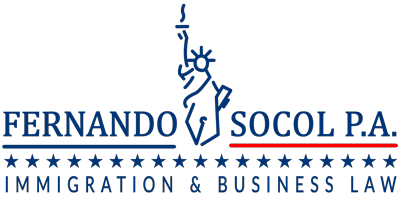Overview of Proposed Legislation and Policy Changes
This article covers proposed legislation, sub-regulatory changes, and—on a practical level—the timing and process for implementing changes under the new administration. While legislative immigration reform takes time to enact, sub-regulatory changes can be implemented immediately without a formal process. Existing regulations can be amended or rescinded through the Administrative Procedure Act (APA) rulemaking process. To clarify the current law and policy from a corporate immigration perspective, we outline the following:
How Immigration Law, Policy, and Treaties Can Be Changed
There are four main ways immigration law can be changed:
1. Sub-Regulatory Changes
This includes changes in Policy Memos, FAQs, agency adjudication policies, and Executive Orders by the U.S. President or agencies like USCIS or the Department of Labor (DOL). It also includes administrative processing decisions influenced by DHS and ICE enforcement policies. Statutory authority is required for retroactive application.
2. Existing Regulations
Rules already published in the Federal Register usually require APA notice-and-comment procedures to be changed or rescinded. Retroactive changes are uncommon and require statutory authority. However, under the Congressional Review Act (CRA), Congress can repeal a major regulation issued within the last 60 legislative days with a simple Senate majority. An example includes a final USCIS rule modifying employment-based visa programs published on November 22, 2016, and effective January 17, 2017.
3. Statutes
Statutory changes require Congressional action. While retroactive amendments are possible, they are rare and limited by constitutional constraints.
4. Treaties
Amending treaties such as NAFTA requires a six-month notice to Canada and Mexico.
Executive Order Summary on Work Visa Programs
On January 23, 2017, a draft Executive Order titled “Protecting American Jobs and Workers by Strengthening the Integrity of Foreign Worker Visa Programs” was leaked. Although not yet issued, it included several key initiatives:
- B-1 Business Visa Reforms: Clarify allowable activities under the B-1 visa and potentially eliminate the “B-1 in lieu of H-1B” category.
- Status Adjustment: Within 30 days, propose regulation to reform green card adjustment processes and reduce inefficiencies.
- OPT/CPT/STEM Reform: Propose rules to tighten oversight and ensure U.S. workers are not disadvantaged by these training programs.
- E-2 Visa Reform: Propose regulations aligning current rules with immigration law.
- Foreign Worker Employment Rules Review: Review and identify regulations allowing foreign employment that violate immigration laws or the national interest within 90 days.
- H-1B Allocation Reform: Make allocation more efficient and prioritize highly skilled workers within 90 days.
- E-Verify Expansion: Present options to incentivize and expand E-Verify participation within 90 days.
- L-1 Site Visits: Begin third-party site visits for L-1B specialized knowledge workers.
- DOL Investigations: Investigate potential harm to U.S. workers caused by nonimmigrant employment within 9 months.
Trump Administration’s 10-Point Immigration Plan (Business-Related)
- Suspending visas for countries with inadequate security screening.
- Full implementation of the biometric entry-exit system.
- Mandatory use of E-Verify nationwide.
- Reform legal immigration to align with “historical norms” and prioritize self-sufficient immigrants.
Summary of Proposed Immigration Legislation
“Protect and Grow American Jobs Act” (H.B. 170)
Limits how employers request H-1B visas, raising the required wage for dependent employers from $60,000 to $100,000 and eliminating the master’s degree exemption.
“High-Skilled Integrity and Fairness Act” (H.B. 670)
Prioritizes market-based allocation of H-1B visas and removes per-country caps for employment-based visas. Also proposes:
- Adjusting the dependent wage exemption level.
- Replacing 4-level prevailing wage with a 3-tier system.
- Requiring attestations from employers on hiring practices.
- Reserving 20% of H-1B visas for small/new businesses.
“RAISE Act” (S. 354)
Seeks to cut legal immigration by 41% in year one, up to 50% by year ten, focusing on employment-based visas and immediate family members. Key points:
- Eliminates the Diversity Visa Lottery (50,000 visas).
- Keeps preferences for spouses and children of U.S. citizens and green card holders.
- Creates renewable temporary visas for dependent parents.
- Caps refugee permanent residency at 50,000 annually.
“H-1B and L-1 Visa Reform Act” (S. 180)
Introduces a merit-based system for H-1B allocations prioritizing U.S. graduates, high salaries, and STEM skills. Also:
- Requires U.S. recruitment efforts before hiring H-1Bs.
- Prohibits replacing U.S. workers with L-1s.
- Expands DOL’s authority for employer oversight.
- Reduces H-1B admission from 6 to 3 years, with extension options.
Worksite Compliance & Government Audits
With increased immigration focus, expect more audits and enforcement:
- USCIS: More fraud detection site visits for H-1B and L-1.
- DOL: Public Access File (PAF) audits.
- OFCCP: LCA and non-discrimination audits.
- ICE: More I-9 inspections and workplace raids.
- E-Verify: No penalties, but “unusual activity” may be reported to other agencies.
We will continue to provide updates on these developments.

